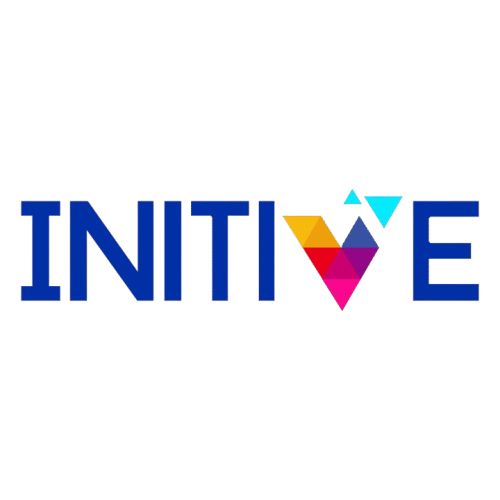
Rethinking software development? Why are AI-driven pipelines are the new standard?
AI is reshaping how software gets built, faster code, fewer bottlenecks, stronger governance. This guide shows how decision-makers can adapt their pipelines for AI-generated code, elevate team performance, and stay ahead in a world where speed and precision define success.
With the rise of AI coding tools like GitHub Copilot and Amazon CodeWhisperer, teams are coding faster, automating grunt work, and gaining more time for real innovation. But there’s a catch: AI-generated code brings new challenges that your traditional pipeline isn’t built to handle.
Think about it; more code means more risk. Security gaps slip through. Manual reviews become bottlenecks. And governance gets murky when machines are writing half your output. According to IDC, over half of organizations already struggle with AI code quality. That’s not a trend, it’s a wake-up call.
This isn’t the future. It’s now. As terms like AI for business, AI solutions, and digital transformation trend upward, forward-looking leaders know it’s time to rethink the software development life cycle. Whether you’re leading engineering, product, or technology strategy, integrating AI into your pipeline isn’t just a competitive edge, it’s a baseline for staying in the game.
This little guide breaks down quickly what that shift really looks like: from tackling security and testing challenges to building AI-ready workflows that move fast without breaking things.
Adapting CI/CD pipelines for AI: Scale faster, ship with confidence
When development cycles compress from weeks to days, your pipeline has to be flexible, automated, and ready to scale or it becomes the bottleneck. To keep up, engineering leaders need pipelines that adapt in real time. Here’s what that looks like:
- Dynamic scaling for testing: You can use tools like Jenkins or GitLab CI to automatically allocate resources when AI-generated code floods your queue. Worth checking also BugBug – https://bugbug.io/, Virtuoso QA – https://www.virtuosoqa.com/, AskUI – https://www.askui.com/
- AI-aware code reviews: Integrate static analysis tools to catch vulnerabilities and low-quality code before it hits production.
- Stricter version control: Enforce branch protection rules and adopt branching strategies that support rapid iteration and safe rollbacks.
- Automated test + deploy: Trigger full test suites, unit, integration, security on every pull request, and let AI-driven release tools optimize deployment timing.
- Modular system design: Architect your platform with plug-and-play components to isolate AI-generated logic and prevent cascading failures.
- Governance at scale: Centralize visibility so you know exactly where AI fits into your pipeline and who’s responsible for what.
AI isn’t a layer you slap onto your workflow. It requires a foundational shift in how you design, build, and ship software. Adapting your pipeline now means fewer production issues later and a development cycle that can actually keep pace with innovation.
The new AI dev cycle: Fast code, real risks, and what to do about it?
AI can crank out code at lightning speed, but speed without oversight leads to chaos. We’re not talking about a boost in efficiency. We’re talking about a flood of output that demands immediate, automated control at every level: quality, testing, and governance.
Here’s what’s really happening and what your team needs to stay ahead:
Code flood? Tighten quality fast
AI doesn’t follow best practices unless you enforce them. Massive volumes of code can hide security risks, logic bugs, and inconsistent design choices. If you’re not scanning every line as it lands, you’re already behind. What to do: run real-time static analysis across all AI-generated code. Set automated checks to flag weak logic, insecure patterns, and compliance issues immediately.
Pipelines are clogging – Fix that flow
AI generates code faster than most teams can test or deploy it. If your QA and release cycles are manual or slow, you’re creating a high-speed bottleneck. Your move: auto-generate test cases directly from code changes. Build continuous testing into your dev pipeline to eliminate slowdowns. Let automation handle releases end-to-end from code commit to deployment, so your team can focus on real issues, not checklists.
Keep it agile, keep it clean
You need to know what was built, how it was tested, and who approved it. And you need all that without dragging down your velocity. How to stay in control without slowing down: track how AI-generated code impacts quality over time. Add audit trails, permissions, and version control across the workflow. Bake compliance into your pipelines with automated checks, not manual reviews. Define clear roles for oversight so decisions can be made fast, with full context.
A framework solutions across the development lifecycle
Some options worth checking as alternatives or complements to major tools
Code Creation
Action: Enable AI-assisted coding to accelerate development
Mainstream Tools: GitHub Copilot, Amazon CodeWhisperer
Some options worth checking: Qodo – https://www.qodo.ai
Testing
Action: Automate quality checks across new code
Mainstream Tools: Cypress, TestRail, Jest, Selenium
Some options worth checking: BugBug – https://bugbug.io, Virtuoso QA – https://www.virtuosoqa.com, AskUI – https://www.askui.com
Action: Auto-generate test cases from code changes
Mainstream Tool: Testim.io
Some options worth checking: Diffblue Cover – https://www.diffblue.com/diffblue-cover
Release
Action: Automate intelligent deployments
Mainstream Tools: Harness, Spinnaker
Some options worth checking: CloudWise – https://cloudwise.ai, Launchable – https://launchableinc.com
Governance
Action: Track, audit, and document AI-generated code
Mainstream Tools: Backstage, Datadog
Action: Monitor how AI impacts long-term code quality
Mainstream Tool: AWS CodeGuru
Some options worth checking: CodeScene – https://codescene.com, Sourcerer – https://sourcerer.io
Quality Control at Scale
Action: Analyze AI-written code for bugs, logic flaws, and security gaps
Mainstream Tools: SonarQube, Snyk
Some options worth checking: ShiftLeft – https://www.shiftleft.io, DeepCode – https://www.deepcode.ai
Deployment Bottlenecks
Action: Bake testing tools into CI/CD to avoid release delays
Mainstream Tools: Jest, Selenium, Cypress
Some options worth checking: Poolside AI – https://poolside.ai, Virtuoso QA – https://www.virtuosoqa.com
Software teams that adapt fast, automate early, stay in control, and evolve with AI, will lead. Skip perfection. Start with one tool, one test, one metric. Then scale. In today’s dev cycle, speed, quality, and trust aren’t optional, they’re survival.

Comments